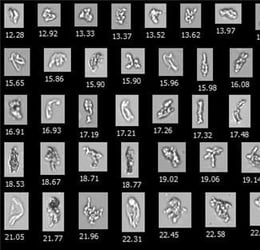In a recent paper discussing particle counting and analytical techniques, the number and type of particles present in intravitreal injection formulations of three different drug agents used against vascular endothelial growth factor were investigated.
Total visible, subvisible and nanoparticle numbers along with size distributions were quantified using light obscuration, flow imaging microscopy, resonant mass measurement, tunable resistive pulse sensing, and dynamic light scattering.
The goal of the study was to contribute data on levels of subvisible particles, nanoparticles, and protein aggregates in the new prefilled aflibercept and brolucizumab syringes and to compare it to samples of bevacizumab delivered from a compounding pharmacy.
Of particular interest is the yet undetermined role of nanoparticles in ophthalmic solutions, and the potential to contribute to interocular pressure (IOP). It is not known whether nano- or microparticles, or the proteins themselves cause a blockage of the trabecular meshwork. Prior research has clearly demonstrated that secondary IOP increase can be due to mechanical obstruction of the trabecular meshwork.
The team performed the study using a FlowCam 8100, suitable for particles 2µm - 100µm. The FlowCam Nano is also now available, enabling the count and characterization of particles as small as 300nm.
Read the full paper here:











